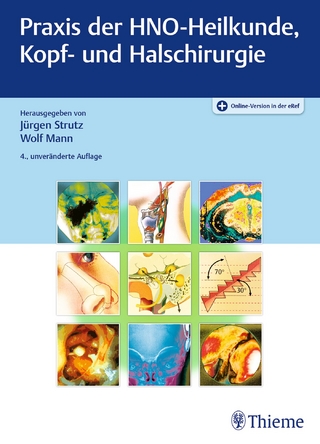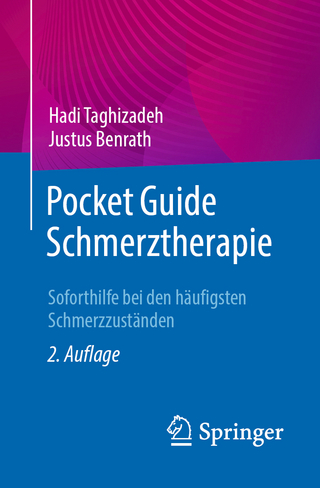
Cholesteatoma and Anterior Tympanotomy
Springer Verlag, Japan
978-4-431-70197-2 (ISBN)
- Titel ist leider vergriffen;
keine Neuauflage - Artikel merken
Acquired aural cholesteatoma poses a unique procedural dilemma with regard to pathogenetic research and theory building. Because cholesteatoma spontane- ously occurs only in the poorly pneumatized human ear, its pathogenesis is specific to humans. Nonetheless, because of the ethical questions surrounding human experimentation, pathogenetic study has almost exclusively involved nonhuman subjects. Indeed, attempts have failed in almost all animal expe- riments except with the gerbil, and even here experimental designs have been improbable compared with human cholesteatoma. Cholesteatoma in the gerbil is useful, therefore, only for the study of pathology and not for human pathogenesis. I hold that the pathogenesis of cholesteatoma will be understood by studying the cholesteatomatous ear, that is, the malpneumatized ear of the human. The anatomical difference between the normal and malpneumatized ear is a probable cause of cholesteatoma. This difference may be found clinically in facial nerve decompression and cholesteatoma surgery, as, for example, facial nerve palsy occurs usually in the normal, well-pneumatized ear.
Of course, conventional animal experimentation will not confirm this clinical difference since there is no ideal animal model for the poorly pneumatized human ear. Present surgical techniques for cholesteatoma vary greatly according to indi- vidual otosurgeon's opinion. The most extreme difference of opinion is focused on whether to remove the external ear canal wall. Normally, the best option would be not to remove the canal wall if cholesteatoma recurrence can be prevented. Simply put, recurrence of cholesteatoma comes about when its cause has not been removed during primary surgery.
1. Introduction.- References.- 2. Anatomical Studies.- 2.1 Normal Adult Temporal Bone.- 2.1.1 The Protympanum of the Tympanic Cavity.- 2.1.2 The Tympanic Diaphragm and the Tympanic Isthmus.- 2.1.3 The Supratubal Recess.- 2.1.4 Anatomical Studies of the Supratubal Recess.- 2.1.5 Measurements of the Supratubal Recess and Related Structures.- 2.2 Embryonal Temporal Bone.- 2.3 Temporal Bone in Neonates and Children.- 2.3.1 Mastoid Pneumatization and Age.- 2.3.2 Shape of the Supratubal Recess.- 2.3.3 Size of the Supratubal Recess.- 2.3.4 Contents of the Supratubal Recess.- 2.3.5 Patterns of Communication with the Supratubal Recess.- 2.4 Fine Structure of Mucosal Folds and Mucosa.- 2.4.1 Normal Mucosal Fold.- 2.4.2 Pathological Mucosal Fold.- 2.4.3 Superficial Structure of Mucosa.- 2.5 Developmental Processes of the Supratubal Recess.- References.- 3. Anterior Tympanotomy: A Surgical Technique for Cholesteatoma.- 3.1 Historical Considerations and Naming of Anterior Tympanotomy.- 3.2 Surgical Technique in Anterior Tympanotomy Using the Canal-Up Method.- 3.2.1 Incision in the Skin.- 3.2.2 Detachment of the Skin of the Ear Canal.- 3.2.3 Position of the Head in Mastoidectomy.- 3.2.4 Eradication of Pathological Tissue.- 3.2.5 Anterior Tympanotomy.- 3.2.6 Ossiculoplasty and Meatoplasty.- 3.2.7 Surgical Complications and Related Matters of Anterior Tympanotomy.- References.- 4. Clinical Results of Anterior Tympanotomy in Surgery for Cholesteatoma.- 4.1 Recurrent and Residual Cholesteatoma.- 4.1.1 Attic Cholesteatoma Operated on Without Anterior Tympanotomy.- 4.1.2 Attic Cholesteatoma Operated on with Anterior Tympanotomy.- 4.1.3 Adhesive Cholesteatoma Operated on Without Anterior Tympanotomy.- 4.1.4 Adhesive Cholesteatoma Operated on with Anterior Tympanotomy.- 4.1.5 Discussion.- 4.2 Comparative Postoperative Effects on Hearing After Anterior Tympanotomy or After Other Surgical Procedures for Cholesteatoma.- 4.2.1 Levels of Air-Conducted Hearing in Attic Cholesteatoma.- 4.2.2 Levels of Air-Conducted Hearing in Adhesive Cholesteatoma.- 4.2.3 Levels of Air- and Bone-Conducted Hearing as These Relate to Speech Frequencies.- 4.2.4 Bone-Conducted Hearing at 4000 Hz.- 4.2.5 Discussion.- References.- 5. Surgical Findings of Anterior Tympanotomy in the Cholesteatomatous Ear.- 5.1 Attic Cholesteatoma.- 5.1.1 Plate Type of Partition.- 5.1.2 Pyramidal Type of Partition.- 5.1.3 Anterior Type of Partition.- 5.2 Adhesive Cholesteatoma.- 5.2.1 Plate Type of Partition.- 5.2.2 Pyramidal Type of Partition.- 5.2.3 Anterior Type of Partition.- 5.2.4 Mucosal Fold Type of Partition.- 5.3 Pathological Development of the Supratubal Recess.- 6. Computed Tomography of the Cholesteatomatous Ear.- 6.1 Computed Tomographic Scan of Normal Temporal Bone.- 6.2 Computed Tomographic Scan of Attic Cholesteatoma.- 6.2.1 Plate Type of Partition in Attic Cholesteatoma.- 6.2.2 Pyramidal Type of Partition in Attic Cholesteatoma.- 6.2.3 Anterior Type of Partition in Attic Cholesteatoma.- 6.3 Illustration of Bony Partitions in Attic Cholesteatoma.- 6.3.1 Plate Type of Partition in Attic Cholesteatoma.- 6.3.2 Pyramidal Type of Partition in Attic Cholesteatoma.- 6.3.3 Anterior Type of Partition in Attic Cholesteatoma.- 6.4 Computed Tomographic Scan of Adhesive Cholesteatoma.- 6.4.1 Plate Type of Partition in Adhesive Cholesteatoma.- 6.4.2 Pyramidal Type of Partition in Adhesive Cholesteatoma.- 6.4.3 Anterior Type of Partition in Adhesive Cholesteatoma.- 6.4.4 Mucosal Fold Type of Partition in Adhesive Cholesteatoma.- 6.5 Illustrations of Types of Bony Partitions in Adhesive Cholesteatoma.- 7. Pathogenesis of Cholesteatoma.- 7.1 Negative Pressure in the Epitympanum Caused by an Osseous Tympanic Diaphragm.- 7.2 Pneumatization in Cholesteatoma and in Other Diseases of the Middle Ear.- 7.2.1 Exudative Otitis Media and Cholesteatoma.- 7.2.2 Chronic Otitis Media and Cholesteatoma.- 7.2.3 Adhesive Otitis Media and Cholesteatoma.- 7.3 Developmental Processes of Attic Cholesteatoma.- 7.4 Developmental Processes of Adhesive Cholesteatoma.- References.
| Erscheint lt. Verlag | 30.7.1997 |
|---|---|
| Verlagsort | Tokyo |
| Sprache | englisch |
| Gewicht | 410 g |
| Einbandart | gebunden |
| Themenwelt | Medizin / Pharmazie ► Medizinische Fachgebiete ► Chirurgie |
| Medizin / Pharmazie ► Medizinische Fachgebiete ► HNO-Heilkunde | |
| ISBN-10 | 4-431-70197-4 / 4431701974 |
| ISBN-13 | 978-4-431-70197-2 / 9784431701972 |
| Zustand | Neuware |
| Haben Sie eine Frage zum Produkt? |
aus dem Bereich


